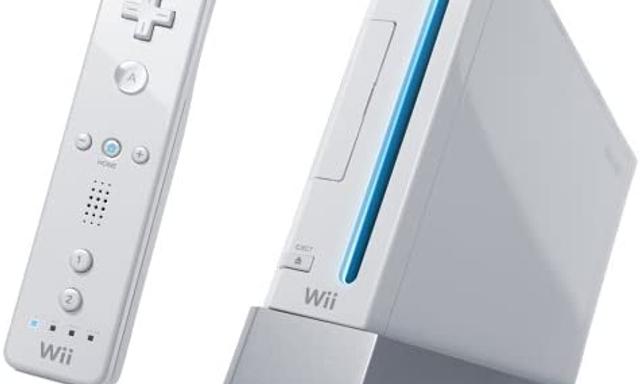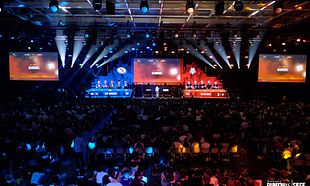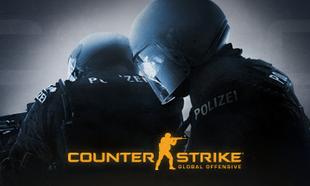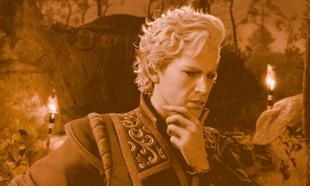By the mid 2000's, Sony's grip on the gaming industry was starting to slip; Microsoft started to prove themselves as one to watch, but Nintendo were about to burst back onto the scene after licking their wounds from the modest flop of the Gamecube.
The Gamecube was an ingenious console with a raft of fantastic exclusives such as 'Metroid Prime', 'The Legend Of Zelda: Wind Waker' and the brilliant 'Eternal Darkness', but it simply didn't click with the public at large.
Nintendo's last console, the Nintendo 64, had sold around 35 million units, whereas the Gamecube limped over the 20 million units mark.
The GameCube made the fatal error of making its disc system a proprietary one, so developers had to spend extra time and resources developing for the system.
In contrast, the PlayStation 2 and Xbox were able to use and play CDs as well as DVDs.
This unforced error was the only thing the Gamecube did wrong, but Nintendo was not going to make that mistake again.
If they were to put out a new console, it would be something people truly haven't seen before.
Nintendo, which dominated the video game landscape pretty much unopposed for as long as it existed, was staring down competition from Sony and Microsoft, and needed to get back on top.
The Nintendo DS was a smash success for Nintendo upon release in 2005, in large part because it was a console for people that didn't know or care about 'Halo' or 'Grand Theft Auto'.
'Nintendogs' and 'Dr. Kawashima's Brain Training' were experiences unlike anything else on the market at the time, and suddenly people who had written off video games as escapism for children and teenagers were buying the DS in their droves.
The men behind the new Nintendo revolution? Satoru Iwata and Reggie Fils-Aimé.
Iwata inherited something approaching a dysfunctional Nintendo in the early 2000's, and Iwata's philosophy was simple; make games anyone from any walk of life can enjoy.
Iwata took over from Hiroshi Yamauchi, who ran Nintendo from 1949 to 2002.
In that timespan, Nintendo went from a humble playing card maker to one of the preeminent names in all of entertainment.

However by the end of Yamauchi's reign, it was clear that change was needed, and Iwata was drafted in to bring Nintendo into the 21st century.
To say he succeeded would be greatly underselling him.
Not only did Iwata put Nintendo back on the map, he also introduced gaming to millions who never picked up a console before.
Iwata passed away in 2015, but one of his final projects was serving as the head developer for the Nintendo Switch.
Under his watch, Iwata oversaw the development of the Nintendo DS and the Wii, as well as helping get the Switch off the ground.
The word "legend" doesn't begin to describe him.
The other half of the equation is a flamboyant American by the name of Regis Fils-Amie.
Fils-Aime was an executive at Nintendo at the time and became the face of Nintendo at the E3 conferences.
Marketing is one of the key components of any video game console, and Fils-Amie is the master of his craft.
Any marketing graduate will tell you the best way to reach people is by being irreverent, and Nintendo's advertisements during the Fils-Amie era were proof of that.
It would be reductive to say the Wii was as successful as it was because the stars aligned and it was a case of "right place, right time", there was a method to Nintendo's madness.
In a 2007 interview with CNET, Fils-Amie discussed his marketing strategy.
"First, how do you satisfy the core while still expanding appeal? And second, how do you leverage your strengths against entirely untapped audiences--to the so-called "blue oceans" in popular marketing speak? ... Provide a new product that actually underperforms on an established industry metric for "progress," and substitute an alternative that typically is smaller, less expensive and easier to use."
"Initially, the "core" of any industry will scoff. But if the product is right, enough new users will be attracted to form an alternative definition for progress."
Iwata and Fils-Amie's shrewd business acumen were spot-on - the Nintendo Wii was woefully underpowered in comparison to the Xbox and PlayStation, but the low retail price ended up undercutting their rivals.
The Nintendo Wii retailed for £179.99 in the UK, or €250 across Europe, and the low price point ended up being the best business decision since George Lucas bought the merchandising rights for the 'Star Wars' films.
Another major factor in the Wii's success? Novelty.
The PlayStation 2 ended up selling really well because it acted as a DVD and CD player for many people on top of having great games, and the Xbox allowed players to play online with other people.
Once again, Nintendo saw a gap in the market, identified an easily marketable hook, and the rest is history.
As daft as it sounds in 2021, but swinging around a controller like Luke Skywalker to defeat enemies is an impishly appealing idea.
When you're trying to stand out from a marketing standpoint, novelty and innovation wins every time.
It may seem quaint in 2021, but there was a time when motion controls seemed like the future of gaming.
At some point in the mid-2000s, console manufacturers must have seen the bit in 'Minority Report' where Tom Cruise uses his hands to navigate a series of computer screens and decided that scene looked cool enough to carry an entire console idea.
Consumers bought into Nintendo's line of thinking too, and the Wii sold like hotcakes.
In any console war, the victor is the competitor who either does something totally original or novel, and for that reason, the Wii won the 7th generation.
The console ended up selling over 100 million units, leaving Sony and Microsoft in the dust.
Of course, a console is only as good as its launch titles, and indeed, game library, so what did the Wii have in store?
'Tetris' was a great show of what the Gameboy was capable of back in the 1980s and is regarded as the greatest pack-in video game of all time.
That is, until 'Wii Sports' came bundled with every unit of the Wii.
It's difficult to understate just how seismic 'Wii Sports' was for its time.
'Wii Sports' could be enjoyed by anyone from a 5-year-old to an octogenarian, and covering that broad of a userbase is a testament to the design philosophy of Junji Morii, the design director for 'Wii Sports', as well as Iwata's decision to make games for everyone and not one specific demographic.

Video games are different from film and television in that the director isn't as celebrated as it is in other mediums, but Morii is such a crucial component of the Wii's success it would be remiss not to mention him.
Prior to 'Wii Sports', Morii was the design director for 'Nintendogs', another wildly successful Nintendo property that helped unlock a new demographic for Nintendo to market to.
Morii made video games for people who didn't know what video games are, and made them fans.
'Wii Sports' and 'Nintendogs' certainly isn't as complex as the likes of a 'Metal Gear Solid' or 'Halo', but a big part of the DS and Wii's appeal was marketing to people who had never picked up a console in their lives and made them feel at home using their consoles.
In the story of video games, Morii is something of an unsung hero.
The idea of a pack-in game is something that shows what the console is capable of and suckers in passers-by curious as to what you're playing.
'Wii Sports' is to this day, one of the 5 best-selling video games of all time, with internal Nintendo sources putting lifetime sales at roughly 82 million.
The other Wii launch titles were a mixed bag, but looking back 15 years after the fact the other Wii launch titles not being great is a minor nitpick - when you have a juggernaut like 'Wii Sports', does it really matter?
Nintendo knew they were on to a winner, and launched 'Wii Fit' in 2008, which sold over 20 million units - not bad for something with a retail price of €90.
'Wii Fit' selling that many copies is a testament to how Nintendo created a fanbase of people who don't typically play video games and made them avid consumers of their product.
Within the space of 18 months, the Nintendo Wii became not only the console of choice among consumers but one of the biggest selling electronic items on the market.
Nintendo's gamble paid off in ways it could never have imagined.
Sony and Microsoft both chased the casual market to varying degrees of success and both companies attempted to copy the Wii motion-sensing magic.
Motion sensors in gaming was a fad, and Nintendo caught the crest of the wave.
Microsoft's Kinect was perhaps the nadir of Xbox's pretensions and Microsoft's initial idea to make the Kinect a crucial component of the Xbox One is a prime example of hopping on a trend too late after the fact.
As for the PlayStation Move, the less said about it the better - it's like Manchester United signing Alexis Sanchez, a totally unnecessary white elephant that did neither party any good.
In the wake of the Wii, the gaming landscape was altered forever.
Gaming was no longer seen as a hobby for teenage boys with too much pocket money, it had something approaching respectability and legitimacy in the eyes of money for the first time.
A good chunk of those gamers who picked up a console for the first time are still with Nintendo (look no further than 'Animal Crossing: New Horizons' selling over 35 million copies) and those who enjoyed a spot of Wii Bowling are likely keeping the likes that transferred over to 'Candy Crush' or 'Farmville'.
Of course, the Wii wasn't a flawless unicorn of a console - its graphical specs were woefully underpowered, even for the time - but that's an article for another day.
15 years on from Nintendo's gamble, we are still feeling the effects today.









































































